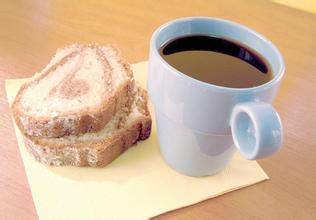Rich aroma of Java coffee flavor taste manor characteristics of boutique coffee beans
Although there was not much result in the march of the Yuan Dynasty into Java, it made Java afraid of the armies of the Yuan Dynasty. Coupled with the fact that a large number of southerners of the Yuan Dynasty of China went south to Southeast Asia to carry out ocean trade, the Southern Navy of the Yuan Dynasty of China often patrolled Borneo (Kalimantan Island) in the South China Sea. Java took the initiative to send tribute to the Yuan Dynasty of China, Java was a vassal state of China, and there were close official and people exchanges between the two countries. After Yuan Shizu, Java sent envoys to Gongfan more than ten times: the first year of Yuan Zhen (1295), the first year of Dade (1297), two and three years, Yanyou seven years (1320), to Ye three years (1323), Taiding two years (1325), three years, four years, to the third year of Shun (1332), and Emperor Yuanshun to the twenty-third year of Yuan Dynasty (1363).
History editor
Java is also famous for its Java ape-man. Homo erectus arrived in Java about 1 million B.C., and fossils of Homo erectus were found near the Brantas River in eastern Java. 2 million years ago, abundant rainfall on the Sunda and Digul plateaus allowed a large number of tropical plants to flourish, providing the conditions for the emergence of many prehistoric cultures.
Hindu and Buddhist kingdoms
Javanese culture and language are largely influenced by the language and culture of the South Asian subcontinent, and many historical sites have proved this view, such as Borobudur, the site of Buddhist temples, and the Branban South Hindu Temple (Prambanan).
In the 2nd century, the filial piety Emperor Yongjian of the Eastern Han Dynasty (131) Ye Tiaoguo sent an envoy to the Eastern Han Dynasty. "Ye Diao" is the pronunciation of the ancient Java Sanskrit name Yavadvipa.
In the 5th century, in the eighth year of Yixi in the Eastern Jin Dynasty (412), the eminent monk Faxian landed in Yabadi. Yevati is Yavadvipa, which is ancient Java.
It is called Holuodan from the Eastern Han Dynasty to the Sui Dynasty.
In the Tang Dynasty, it was called Huan Ling and Huan Po.
In the Song Dynasty, there were three countries on the island of Java: Taruna in the west, Madalan in the middle, and Jianyili in the east. In the third year of Song Taizong Chunhua (992), King Dharmvamca of East Java sent an envoy to pay tribute. At that time, the King of Muro Tea had unified Java, and his power had extended to Bari, Bolin State, and the war with Sanfoqi on the island of Sumatra. But as a result of the East Java-Sanfoqi War, the East Java national army was defeated and King Dharmvamca was killed. The power of Sanfoqi expanded into Java and later, when ships replaced sailboats, people drank relatively fresh coffee beans because of the shortened delivery time. But people who are used to drinking Chen beans are not used to the fresh taste, so they desperately pursue old Java coffee, so that the Indonesian government and some businessmen deliberately store fresh beans in warehouses for one or two years and then sell them to consumers. In fact, compared with fresh beans, the acidity of aged Java beans is close to zero, but the flavor is more intense. Because of the long storage time, the increase in cost and the limited quantity, Java has always been a hot item in the coffee market. In the 1880s, 0 merchants deliberately tampered with some fresh Guatemalan or Venezuelan beans to imitate aged Java for high prices. It is intolerable that 0 merchants dye coffee beans to make them look more like old Java, but there is no doubt that the dyed chemicals are certainly toxic.
Java produces only a small amount of Arabica beans, most of which were imported from Africa after the rust disaster. This coffee has a strong bitter taste after roasting, but its aroma is extremely light. Although it has low acidity and delicate taste, it is rarely used for direct drinking. It is often used to mix mixed coffee, or to make instant coffee in Asian countries that produce coffee. Indonesia is a very noteworthy one. Indonesia is an island country in the Indian Ocean, the islands are distributed on both sides of the equatorial line, of which three islands: Java, Sumatra and Sulawesi produce the world's important coffee. In the mid-17th century, the Dutch brought coffee trees to Ceylon (Sri Lanka) and Java, Indonesia. In the 18th century, Indonesia became a major producer of coffee, and almost all of its high-quality Arabica coffee was supplied to Europe. But by the 19th century, coffee rust, which appeared in Ceylon in 1869, also affected Indonesia. By 1877, most of the coffee fields on the Indonesian islands had been damaged by rust, and the Dutch had to import other coffee varieties from Africa, namely Romsda coffee. It is more resistant to diseases and insect pests, but its quality is inferior. About 90% of Indonesian coffee is Romda beans, about 6.8 million bags a year, and less than 10% of the beans are Arabica coffee, Java coffee beans, the early Java coffee, referring to Arabica coffee formerly grown on the island of Java. It has a strong aroma, low acidity and lubricated taste. When mixed with mocha coffee, the "Java mocha mixed coffee" was once popular and became synonymous with top coffee.

Important Notice :
前街咖啡 FrontStreet Coffee has moved to new addredd:
FrontStreet Coffee Address: 315,Donghua East Road,GuangZhou
Tel:020 38364473
- Prev

Introduction to the flavor and taste characteristics of the bright Costa Rican coffee manor
The climatic conditions in Costa Rica are very different, completely subverting the classification of the four seasons of the year, there are only two seasons, the rainy season from April to December, and the dry season from the end of December to April of the following year, also known as summer. The annual average temperature in San Jose, the capital, ranges from 15 ℃ to 26 ℃, while the temperature in coastal areas is relatively high, with a night average temperature of 2 in the Caribbean.
- Next

Introduction to the flavor and taste characteristics of Guatemala coffee manor, which is mellow and bitter.
In 1982, the leftist guerrillas of the whole country merged to form the National Revolutionary Union of Guatemala, and armed struggle spread all over the country. Farmers dissatisfied with the overthrow of the Arbens regime organized a guerrilla group in which more than 100,000 people were killed and millions displaced. In September 1982, the persecution of the local Mayans by the Guatemalan army was close to genocide, and more than 9000 Mayans were killed. nineteen
Related
- Detailed explanation of Jadeite planting Land in Panamanian Jadeite Manor introduction to the grading system of Jadeite competitive bidding, Red bid, Green bid and Rose Summer
- Story of Coffee planting in Brenka region of Costa Rica Stonehenge Manor anaerobic heavy honey treatment of flavor mouth
- What's on the barrel of Blue Mountain Coffee beans?
- Can American coffee also pull flowers? How to use hot American style to pull out a good-looking pattern?
- Can you make a cold extract with coffee beans? What is the right proportion for cold-extracted coffee formula?
- Indonesian PWN Gold Mandrine Coffee Origin Features Flavor How to Chong? Mandolin coffee is American.
- A brief introduction to the flavor characteristics of Brazilian yellow bourbon coffee beans
- What is the effect of different water quality on the flavor of cold-extracted coffee? What kind of water is best for brewing coffee?
- Why do you think of Rose Summer whenever you mention Panamanian coffee?
- Introduction to the characteristics of authentic blue mountain coffee bean producing areas? What is the CIB Coffee Authority in Jamaica?

